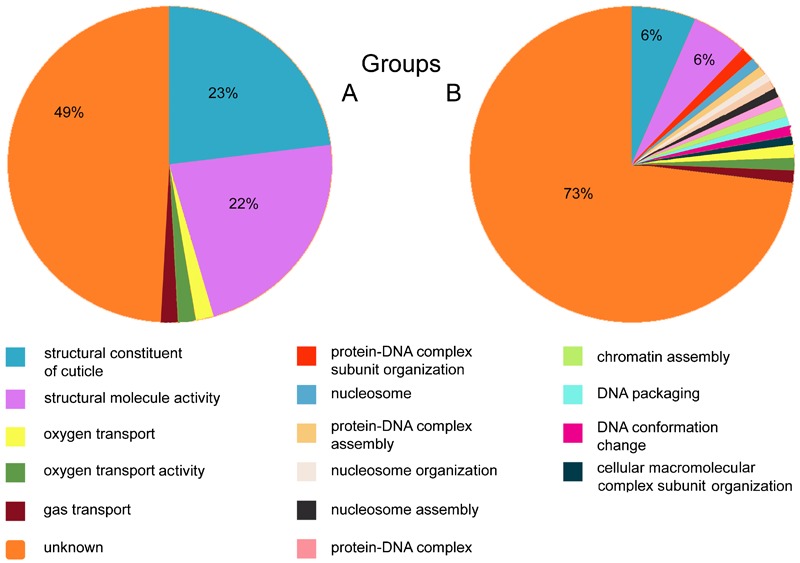Figure 5.

Gene ontology (GO) analysis of the affected genes of Group A (left pie) and Group B (right pie). In Group A 49% of the genes were annotated with GO terms referring to unknown functions and processes. The rest belonged to two large categories (23% each) that had GO annotations related to the cuticle, as well as three small groups (about 2% of the genes each) with GO annotations referring to oxygen transport, oxygen transporter activity, and gas transport. For 73% of the affected genes in Group B no GO terms could be identified. Of the remaining, 6% each belonged to the same two main categories described for Group A (cuticle-related). The remaining genes belonged to small clusters (about 1% each) with GO annotations referring to protein–DNA complex subunit organization, protein–DNA complex assembly, nucleosome assembly, gas transport, chromatin assembly, oxygen transport, nucleosome, nucleosome organization, protein–DNA complex, DNA packaging, oxygen transporter activity, and DNA conformation change. The GO terms that belong to the individual clusters are color-coded (shown below the pies).
